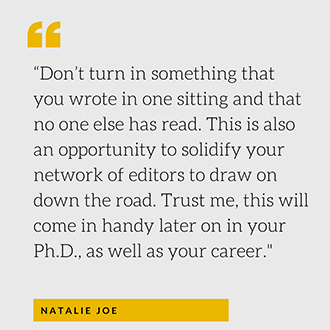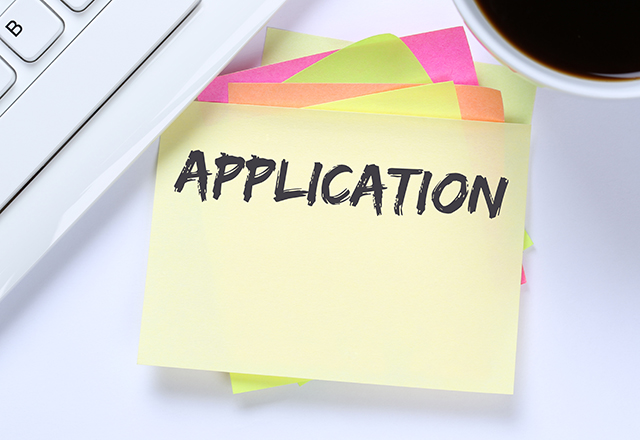Missed part one? Catch up here.
Take a deep breath; it is time to start working on fellowship applications. After applying for and receiving the Ford Foundation fellowship, my friend and fellow Ph.D. student, Ashley Stewart, and I wanted to share advice for fellowship applicants. Since each fellowship has different requirements, its own spectrum of necessary paperwork and different emphases on career pathway or trainability, I’ve chosen to focus here on the main, more general components that I have encountered across most applications.
Every fellowship application requires a research statement and personal statement. These two documents will be the main deciding factors on whether you fit the criteria for a specific fellowship and demonstrate your institution’s ability to successfully train you as a Ph.D. candidate. Be sure to read the application formatting directions carefully, as well as the goals of the fellowship, and have a clear idea of the organization’s purpose for creating this specific fellowship. This information will be the basis for each of your statements. It is also a good idea to ask around and secure an example from a student who has previously received the fellowship you are applying for. You can use this to identify what the previous applicant did well and try to incorporate similar elements in your own application. (Note: Please do not plagiarize anyone’s work!)
It’s a good idea to begin your writing process by preparing a general outline for both statements. You might want to have someone look over these outlines and give feedback prior to committing countless hours to a draft that may not be very coherent or address the correct points. I would recommend asking a person from your thesis lab specifically for help with the research statement — since they will have the best understanding of your research topic — and friends or colleagues for more general editorial assistance with your personal statement. Have at least three people edit each of your statements and give constructive feedback. Write, edit and re-edit several drafts to give the best result. Don’t turn in something that you wrote in one sitting and that no one else has read. This is also an opportunity to solidify your network of editors to draw on down the road. Trust me, this will come in handy later on in your Ph.D., as well as your career.
The Research Statement
 Ashley’s personal workflow is a great example of the general process of compiling a research statement. “I discussed the research project in detail with my PI,” Ashley explained, “then started by working on my aims and sending them to my PI for review. Next, I wrote a broader impacts statement. I wrote the introduction last.” The cornerstone of the research statement is the project’s significance. There shouldn’t be a section that doesn’t address the question, “Who cares?” Bear in mind that there are workshops, classes and resources that teach how to frame this type of writing. Ashley and I modeled an NIH F31 grant when writing our research statements. It’s always beneficial for scientists to practice writing in this format, and it can even be used as a portion of the F31 application if you are considering this application in the future.
Ashley’s personal workflow is a great example of the general process of compiling a research statement. “I discussed the research project in detail with my PI,” Ashley explained, “then started by working on my aims and sending them to my PI for review. Next, I wrote a broader impacts statement. I wrote the introduction last.” The cornerstone of the research statement is the project’s significance. There shouldn’t be a section that doesn’t address the question, “Who cares?” Bear in mind that there are workshops, classes and resources that teach how to frame this type of writing. Ashley and I modeled an NIH F31 grant when writing our research statements. It’s always beneficial for scientists to practice writing in this format, and it can even be used as a portion of the F31 application if you are considering this application in the future.
The Personal Statement
Both Ashley and I began by writing an outline. Ashley elaborated on her process, saying “I spent some time putting together an outline of what I wanted my story to be, thinking about a central theme that speaks to who I am and what motivates me. Then I spent three or four days just writing.” Finding a theme is crucial to the story because it gives you something to accentuate and leaves the reader with an impression of your unique personality. Don’t try to include your life story. Only retain essential details that exemplify the fellowship’s goals and portray you as the ideal applicant.
Your academic successes will be highlighted throughout your application and should be mentioned in the personal statement, but should not be the focus. Remember that the reviewers get a sense of who you are through both of the statements and will use this information to make sure that you are a good fit. Focus on highlighting how your long-term goals align with the goals of the organization and how your research proposal ties into career paths emphasized in that particular fellowship’s criteria. I’ve noticed that individuals with successful applications often carry the same themes from the research proposal into their personal statement and vice versa.
Keep in mind that fellowship applications are incredibly competitive, so it is highly likely that you may not get the fellowship on your first try. I applied for the National Science Foundation fellowship as an undergraduate and did not receive the award, but I did gain a wealth of helpful feedback, comments and suggestions about my research proposal. I used the information that the reviewers sent back to me to guide my next fellowship applications. Therefore, I want to strongly encourage everyone to apply for fellowships, and if you don’t receive the one that you were hoping for, don’t get discouraged! No matter the outcome, there is always something to be gained by simply participating in the application process, including:
- A better understanding of your project and a jump-start on your thesis introduction
- Practice with science communication and pitching your project as well as yourself
- An established network of editors for future applications and writing projects
- Important feedback on aspects of your application and research project that need improvement
Overall, Ashley and I believe that there are no downsides to applying for fellowships during your Ph.D. Now go forth and apply! We wish you luck!
